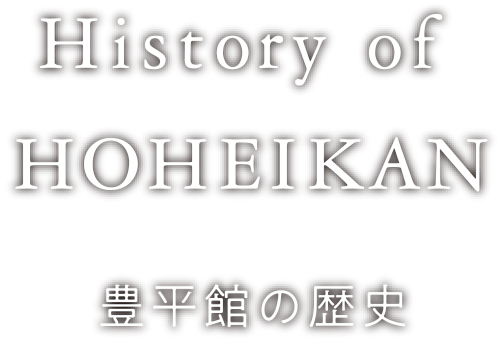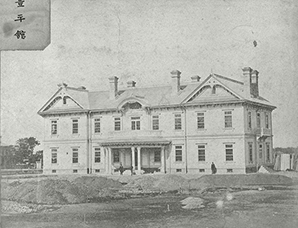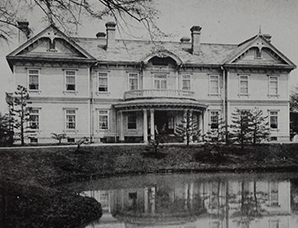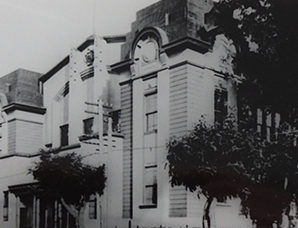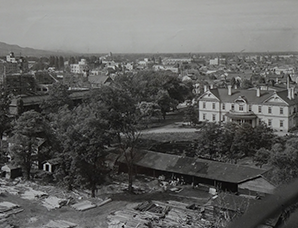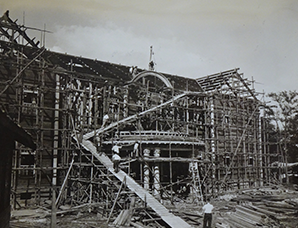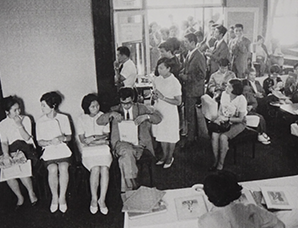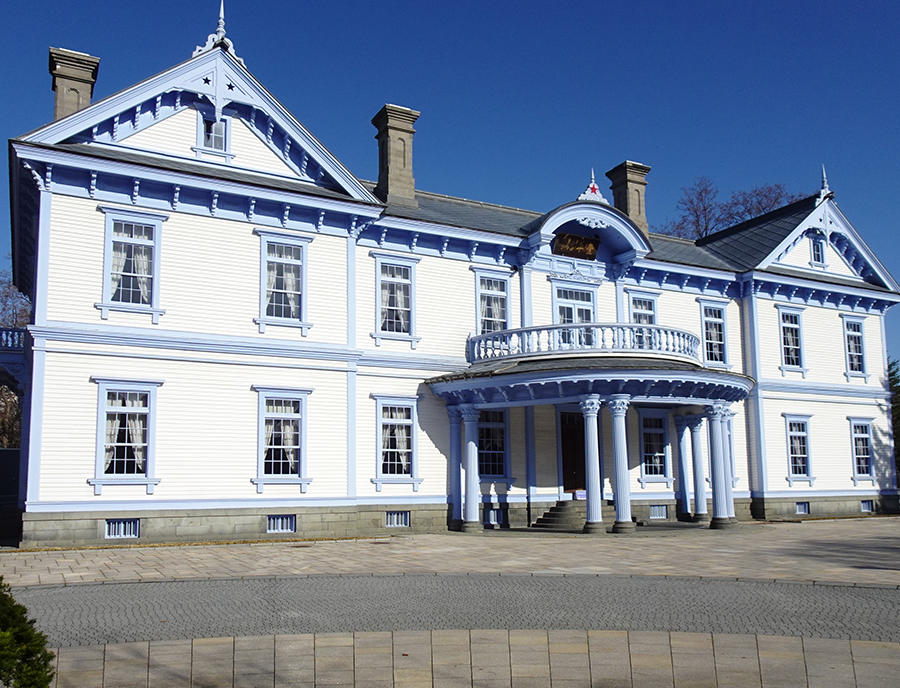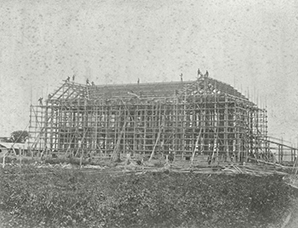
HOHEIKAN under construction Hokkaido University Library
Planning background and construction
In 1869 (Meiji 2), the Meiji government established the Development Commission to develop the Northern areas and began development in earnest in Hokkaido. Initially, honjin, waki-honjin, and the central government branch office were used as accommodations for tourists, but with the growing need for new accommodations, the HOHEIKAN was established. Construction was set to be made at Nishi 1-chome, Kita 1-jo, Chuo-ku, Sapporo (currently the location of Kanamoto Hall) and began in the spring of 1879 (Meiji 12). The main building was completed the following year in November 1880 (Meiji 13). It is said that the name HOHEIKAN was decided immediately after the construction bid, and had been introduced since January 1879 (Meiji 12). Attached facilities, surrounding structures such as iron fences and gates, and gardens were constructed after the completion of the main building and were all completed in August 1881 (Meiji 14).

